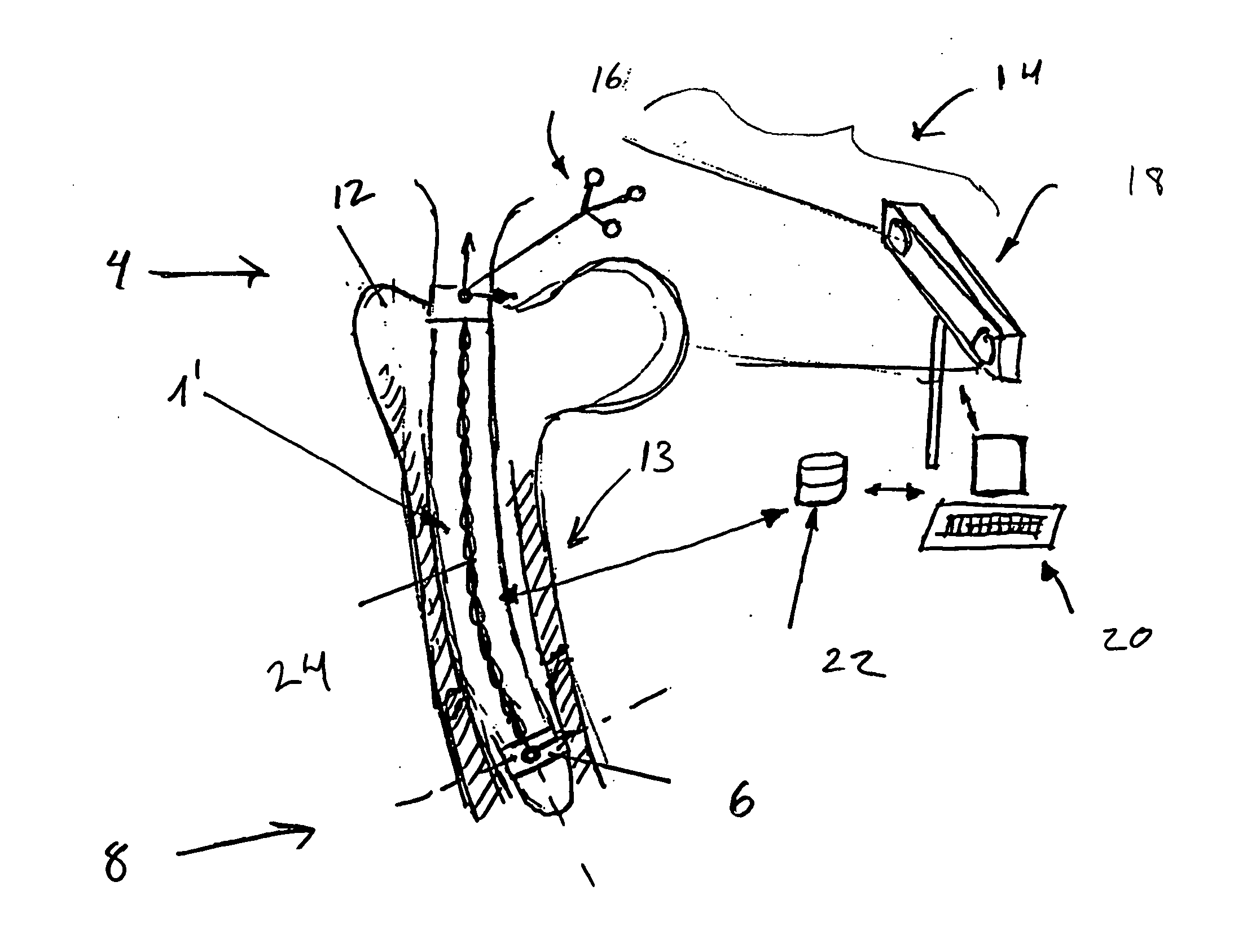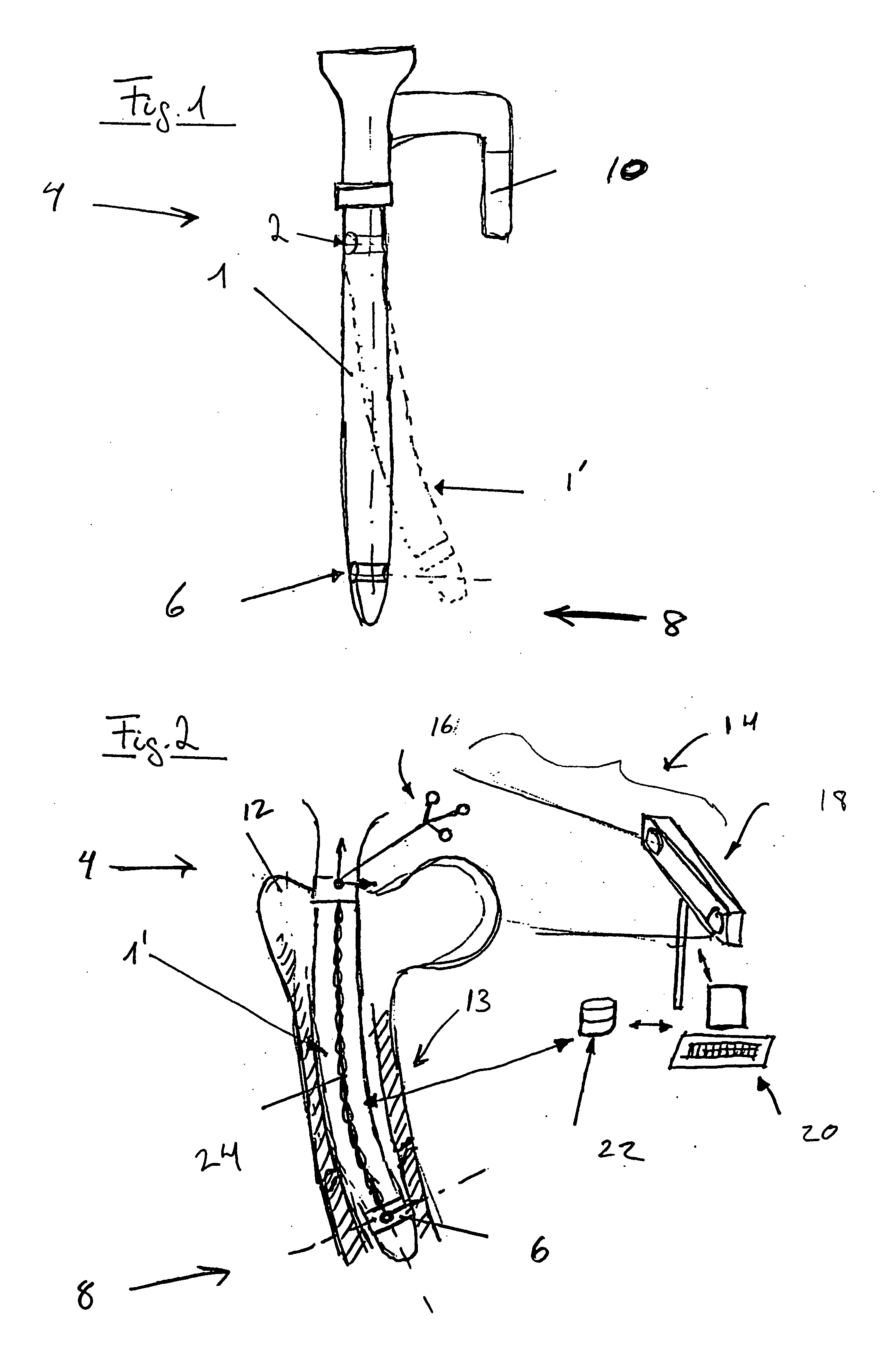Intramedullary pin tracking
a technology for intramedullary pins and tracking devices, applied in the field of intramedullary pin tracking devices, can solve the problems of inability to achieve the effect of reducing radiation load, reducing time and effort, and reducing radiation load
- Summary
- Abstract
- Description
- Claims
- Application Information
AI Technical Summary
Benefits of technology
Problems solved by technology
Method used
Image
Examples
Embodiment Construction
[0027]FIG. 1 illustrates the intramedullary pin 1 in its non-deformed shape and (by a broken line) a deformed intramedullary pin 1′. The intramedullary pin 1 can include an elongated shaft having a fixing bore 2 at its proximal end 4 and a fixing bore 6 at its distal end 8. Furthermore, the intramedullary pin 1 shown in FIG. 1 is attached to a positioning aid attachment 10, which facilitates insertion of the intramedullary pin into a bone 12.
[0028] The pin 1′, inserted in a bone and thus deformed, is shown in FIG. 2. The bone 12 includes a bend 13, which the intramedullary pin follows when it is inserted into the bone. As a result of the bend 13, the fixing bore 6 comes to rest obliquely at the distal end 8. In order to determine the position and orientation of the fixing bore 6 and, therefore, to be able to precisely insert a fixing screw into the fixing bore 6, a tracking system 14 in accordance with the invention is employed. The tracking system 14 includes a reference structure...
PUM
 Login to View More
Login to View More Abstract
Description
Claims
Application Information
 Login to View More
Login to View More - R&D
- Intellectual Property
- Life Sciences
- Materials
- Tech Scout
- Unparalleled Data Quality
- Higher Quality Content
- 60% Fewer Hallucinations
Browse by: Latest US Patents, China's latest patents, Technical Efficacy Thesaurus, Application Domain, Technology Topic, Popular Technical Reports.
© 2025 PatSnap. All rights reserved.Legal|Privacy policy|Modern Slavery Act Transparency Statement|Sitemap|About US| Contact US: help@patsnap.com



